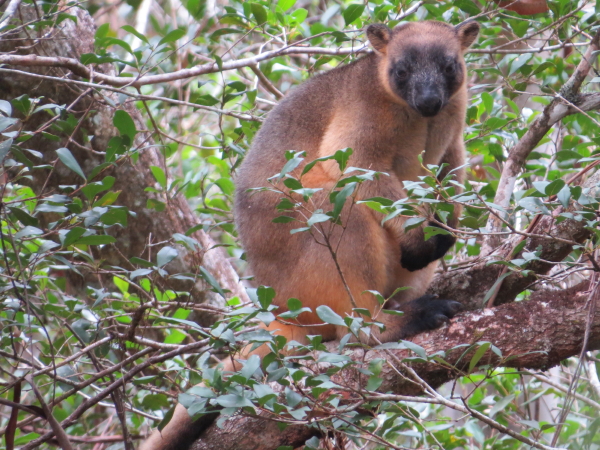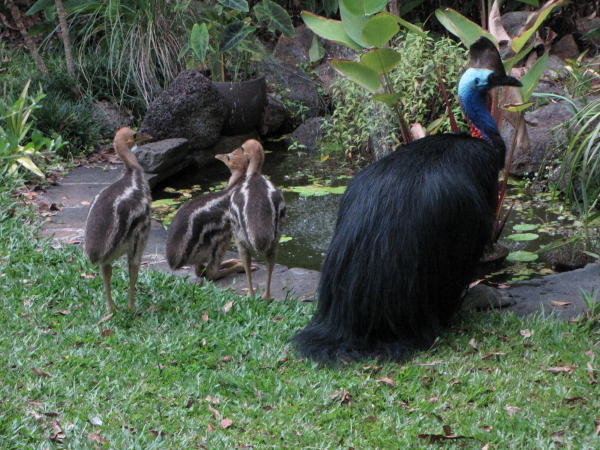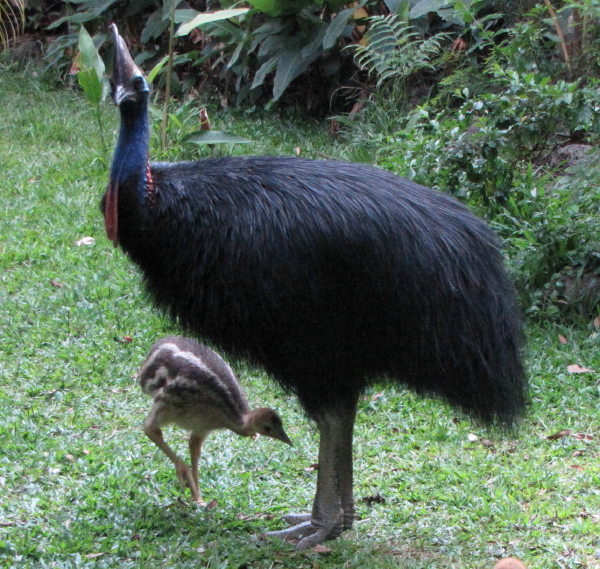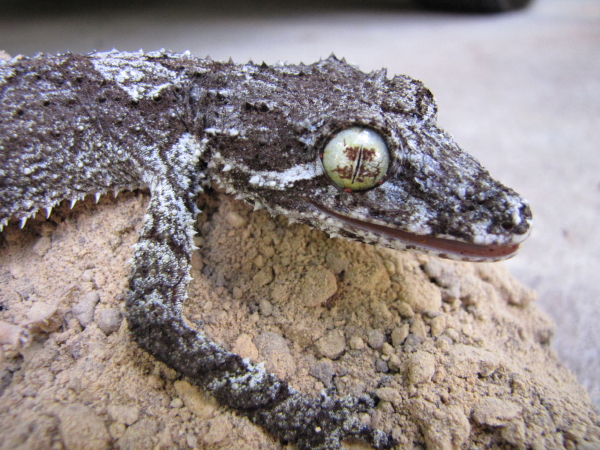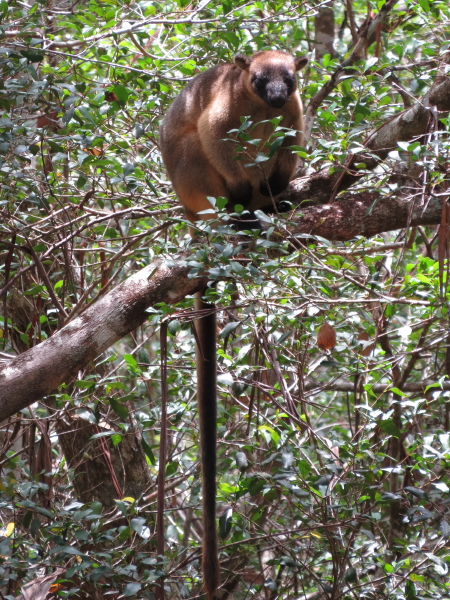
Lumholtz’s Tree-kangaroos (Dendrolagus lumholtzi), one of the two Australian species (the other one, Bennett’s Tree-kangaroo, only occurs further north), are rare in the Kuranda area. Their stronghold are the Atherton Tablelands, and we are privileged to have them on our large forest property near Mount Hypipamee National Park, south of Atherton.
Lumholtz’s Tree-kangaroos, despite their size (like a small koala), are difficult to spot in the rainforest.
On our property, where the forest is more open, the resident male can sometimes be seen making his way along the creek -either on the ground or amongst the trees.

Recently, we spotted him in a tree near our cabin while we were having lunch on the veranda.
Initially, when he noticed us, he was a bit nervous, as indicated by his tail-swishing, but he soon relaxed.
After more than an hour he went on his way again.
Tree-kangaroos are not strictly nocturnal, they can often be observed during the day, too.


